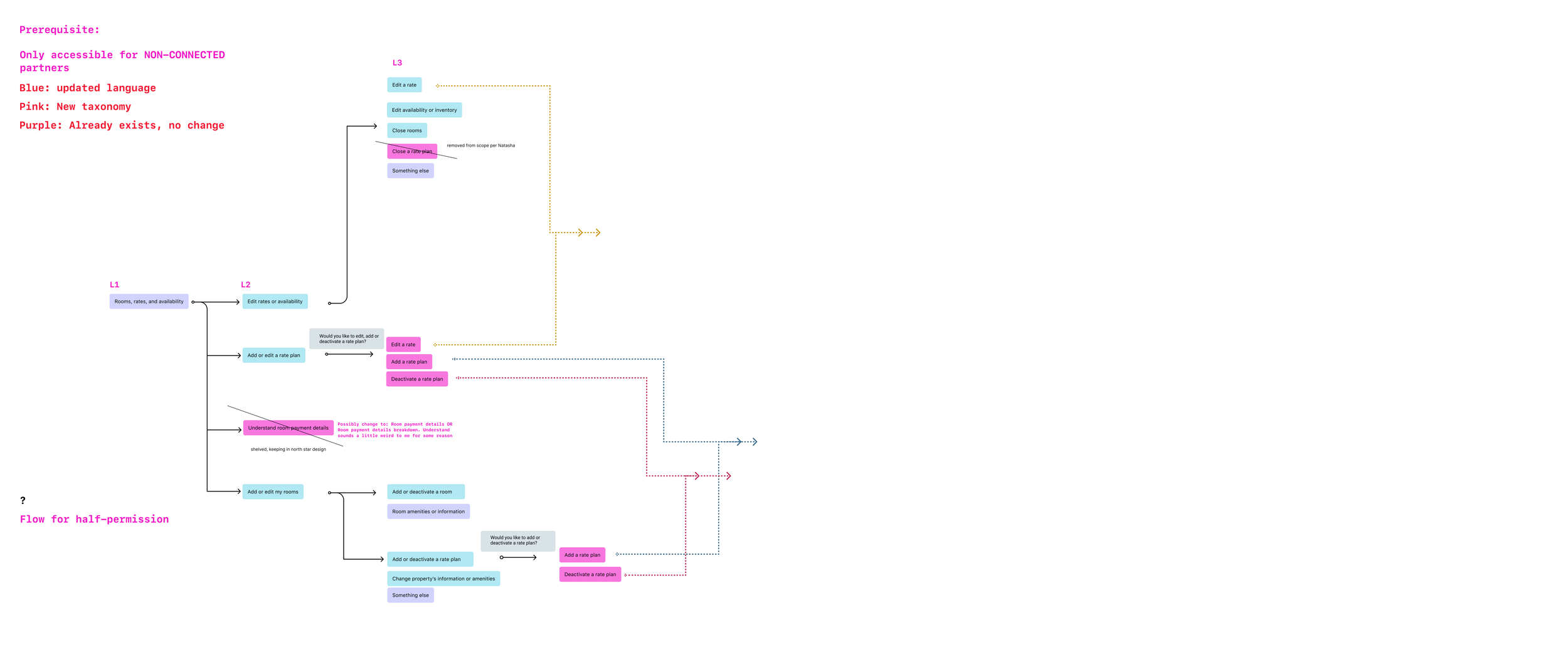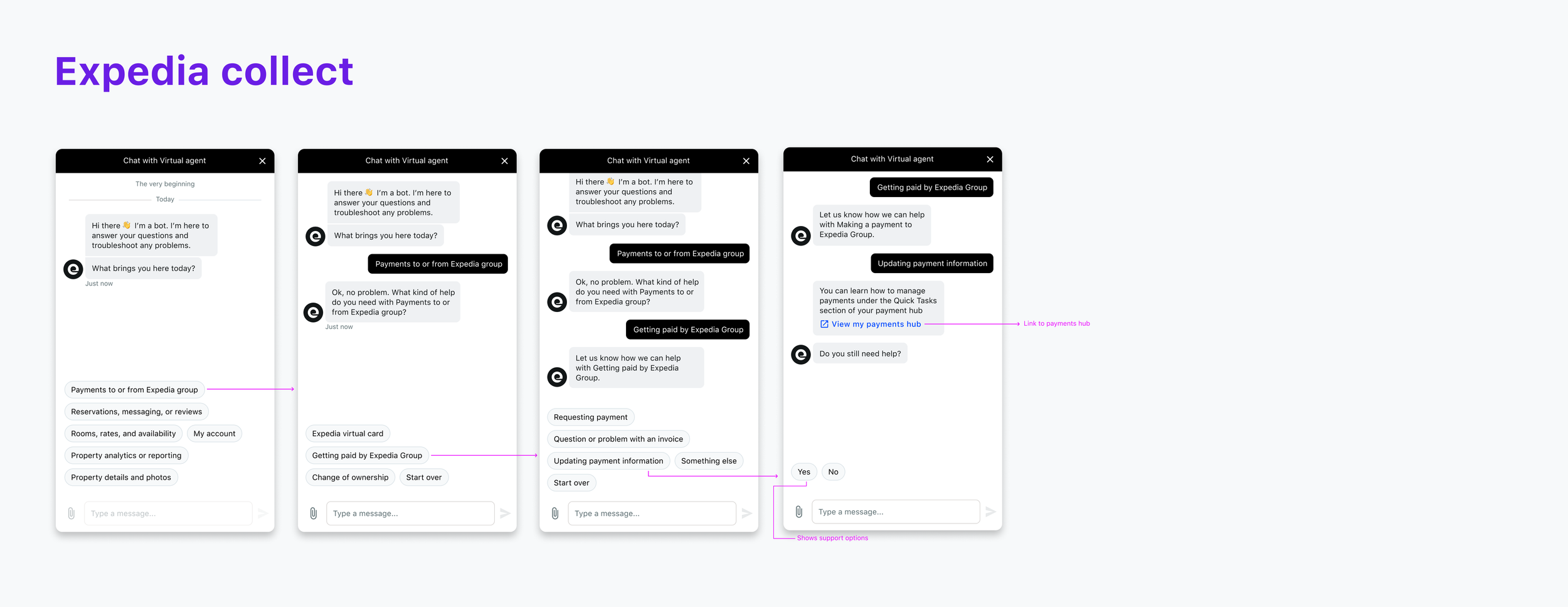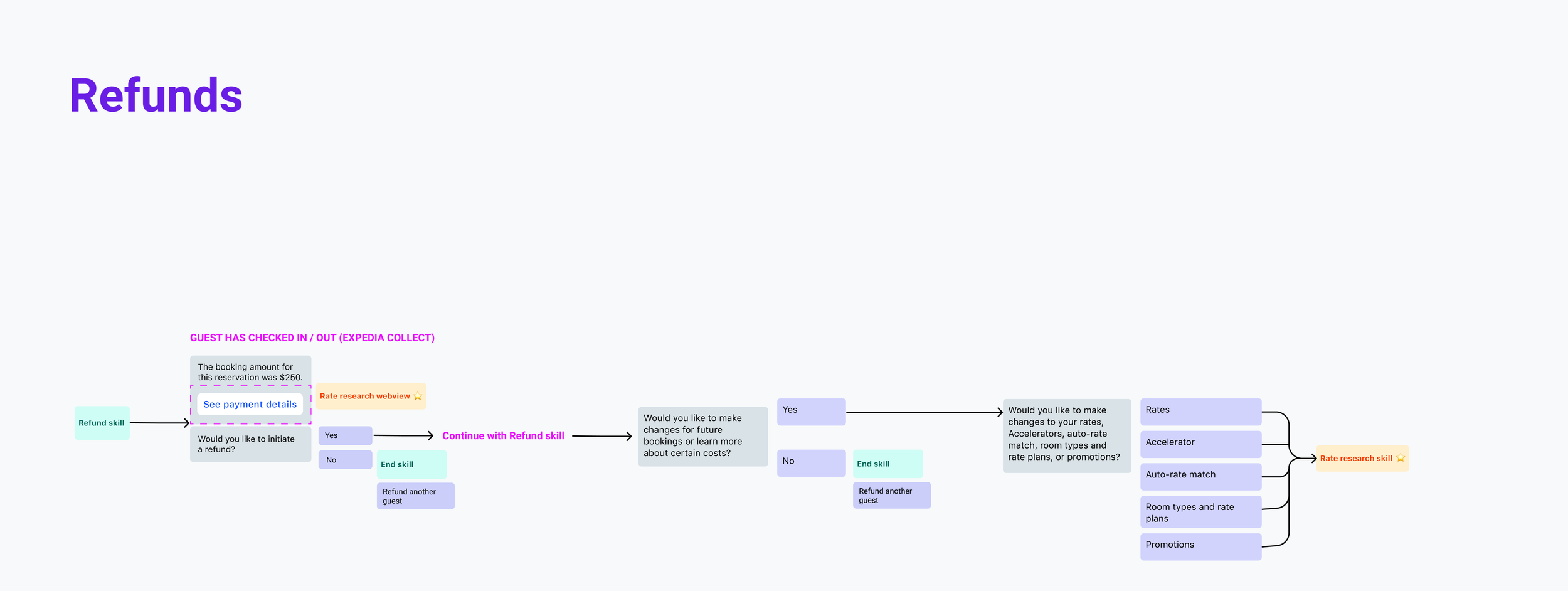What I made:
A chatbot for our hotel partners to self-service any issues with their property or guests.
Expedia is a travel booking website. This project takes place on the B2B side, which means working with the hotels who list their properties on Expedia. The users for this case study refer to people working for and managing these hotels.
Before
Any time one of our users needed help with a booking, they would have to get in touch with our customer support center. Wait times were high and a lot of issues could easily be self-serviced.
The opportunity
Creating a chatbot for our users would allow them to self-service issues and get help faster.
My role
As a content-led and owned project, I was in charge of the discovery, strategy, and handoff of every chatbot flow (skill) that was created.
Conducted internal interviews with our live agents to determine what the highest areas of support were.
Identified what could be solved with a link redirect and what needed a complete flow built out. For areas that required a live person, I mapped out a flow to connect them to an agent over chat.
Created key intents, outlines, and flow maps for every launched skill. In the first year, we launched nine skills.
Wrote scripts for every flow, including all happy and sad paths.
Aligned the chatbot personality with our brand voice and created a chatbot style guide.
Synthesized data after each skill launch to determine where users were getting frustrated or still calling agents so that I could adjust and improve the existing flow.

Example of initial taxonomy mapping

Example of initial skill flow mapping

Example of skill testing in design

Example of initial skill flow mapping

Example of skill testing in design
Results
Within the first 3 months of launch, 87% of chatbot cases were successful without escalating to a live agent.
After 1 year, the total cost savings of was $2,513,835.
One of our most complicated skills only had a 15% successful self-service rate the first few months. After troubleshooting, I introduced some new deep links and flows. After two weeks the self-service rate increased to 30%.
Advocated for a smart search feature to be implemented, which allowed for hotel managers to quickly find the reservation they were messaging about.
What I learned
This project expanded my skills as a conversation designer. As a horizontal project, it required a lot of internal and user research to understand mental models. Also, the natural inclination of frustrated users is to find the fastest way to a live person. This project required regular updating so we could continuously prove its value to users.

